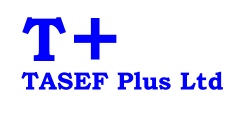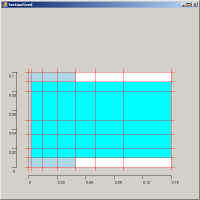Fundamentals
When calculating temperature in fire exposed structures non-
Heat Conduction
TASEF solves the heat conduction equation in two dimensions. Plane and axi-
Radiation and convection boundary conditions
Heat is transferred by radiation and convection to fire exposed surfaces. These two processes are independent. Boundary conditions are specified in TASEF as radiation and gas temperatures which are input as functions of time. Parameters required are emissivity of the exposed surface, the Stefan-
Voids and shadow effects
Many structural assemblies contain voids and enclosures. In these, heat is transferred by radiation and convection which must be considered particularly at elevated temperatures. TASEF has a very accurate method of computing heat transfer between the surfaces surrounding enclosures which may be of different materials. A special case of using this ability is when considering reduced thermal exposure, so called shadow effects, as introduced in Eurocodes.
Thermal properties of materials
Material parameters required are specific conductivity, specific heat and density. Thermal conductivity of materials is input dependent on temperature. TASEF requires calculation of volumetric enthalpy in the process which combines specific heat and density. Enthalpy is input as function of temperature. This is computationally advantageous when analysing materials with moisture, which has a significant effect on temperatures above the boiling point of water.
Further information
For more technical information, please click here.


Software for Fire Safety Engineering
TASEF was developed by Ulf Wickström.
TASEFplus was developed by Kuldeep Virdi.
For further information on the program package and on licensing the software, please contact k.s.virdi@tasefplus.com.